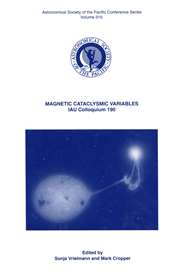No CrossRef data available.
Article contents
Driving g-Mode Pulsation in γ Doradus Variables
Published online by Cambridge University Press: 12 April 2016
Abstract
Core share and HTML view are not available for this content. However, as you have access to this content, a full PDF is available via the ‘Save PDF’ action button.
Surface convection zones in γ Doradus variables (early F-type g-mode pulsators) can drive pulsation via the ‘convective driving’ mechanism. This mechanism is first proposed and studied in the context of ZZ Cetis (hydrogen-envelope white dwarfs with g-mode pulsations) by Brickhill (1991) and Goldreich & Wu (1999). We implement and develop the convective driving theory to suit the environments on γ Dors, in particular, stronger super-adiabatic gradient and weaker convective flux than those in white dwarfs. This results in a spectrum of gravity-modes being excited in the observed temperature range. However, there are more remaining problems than those that are solved.
Information
- Type
- Part 4. The Interaction between Convection and Pulsation
- Information
- Copyright
- Copyright © Astronomical Society of the Pacific 2002
References
Guzik, J.A., Kaye, A.B., Bradley, P.A., Cox, A.N., & Neuforge, C.
2000, Apj, 542, L57
CrossRefGoogle Scholar

